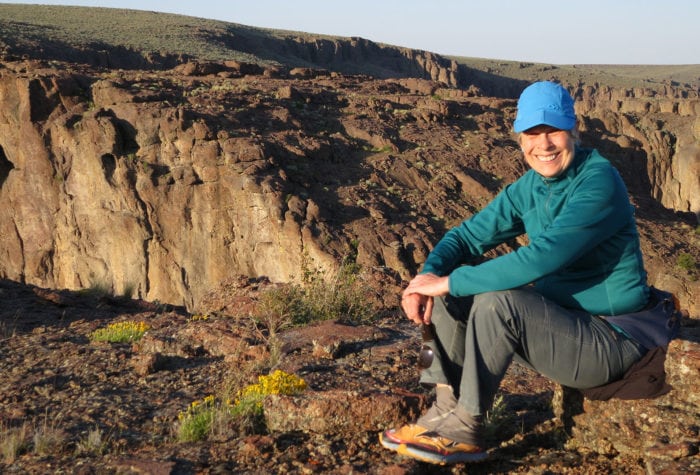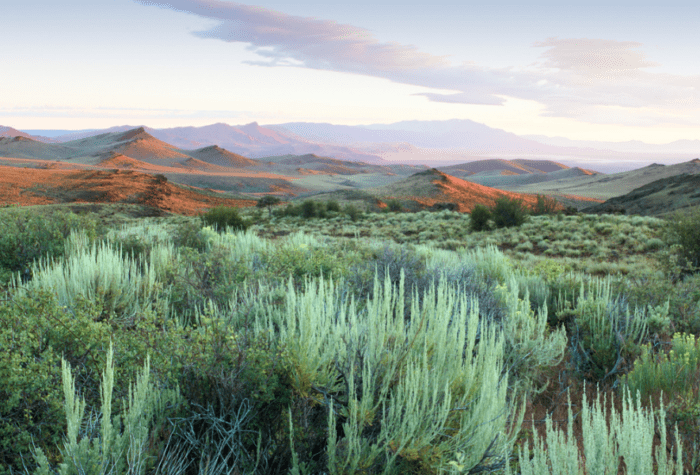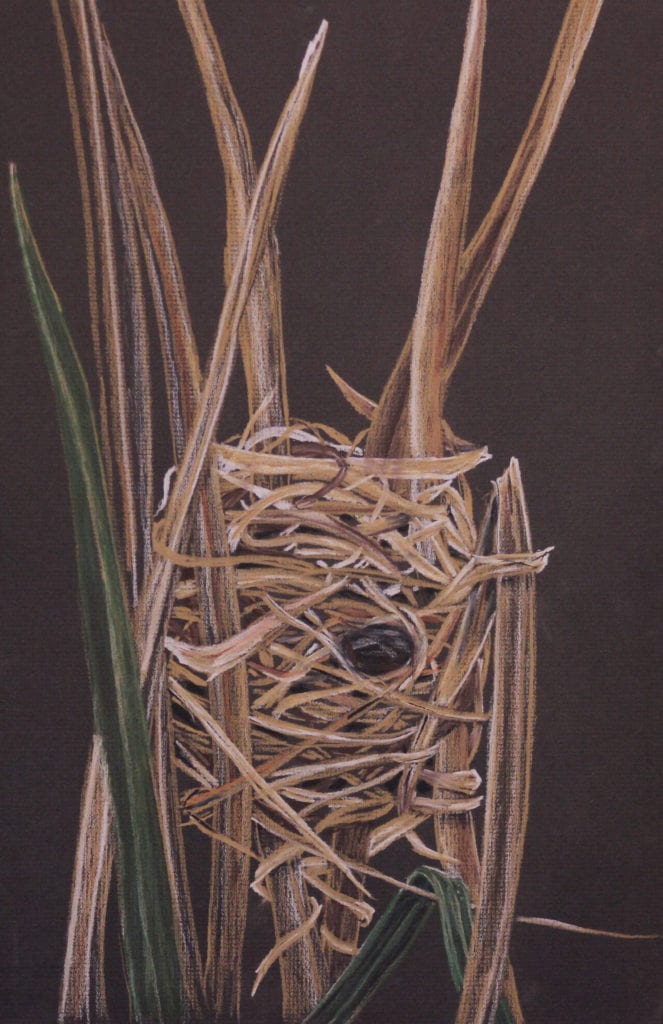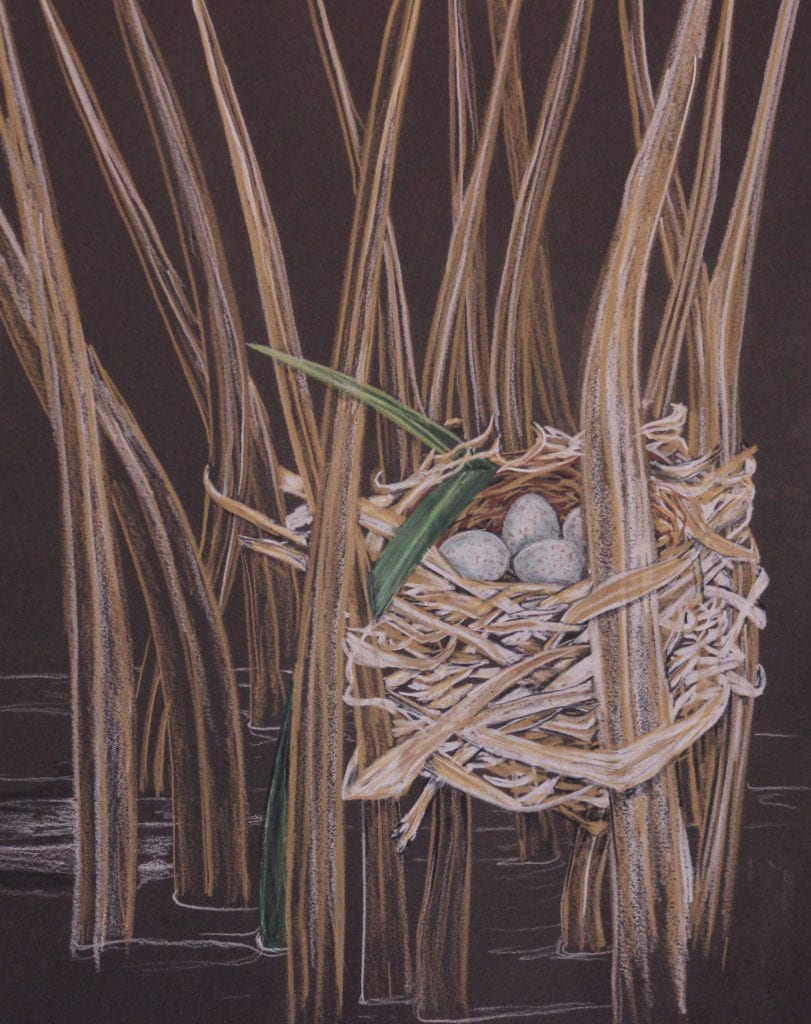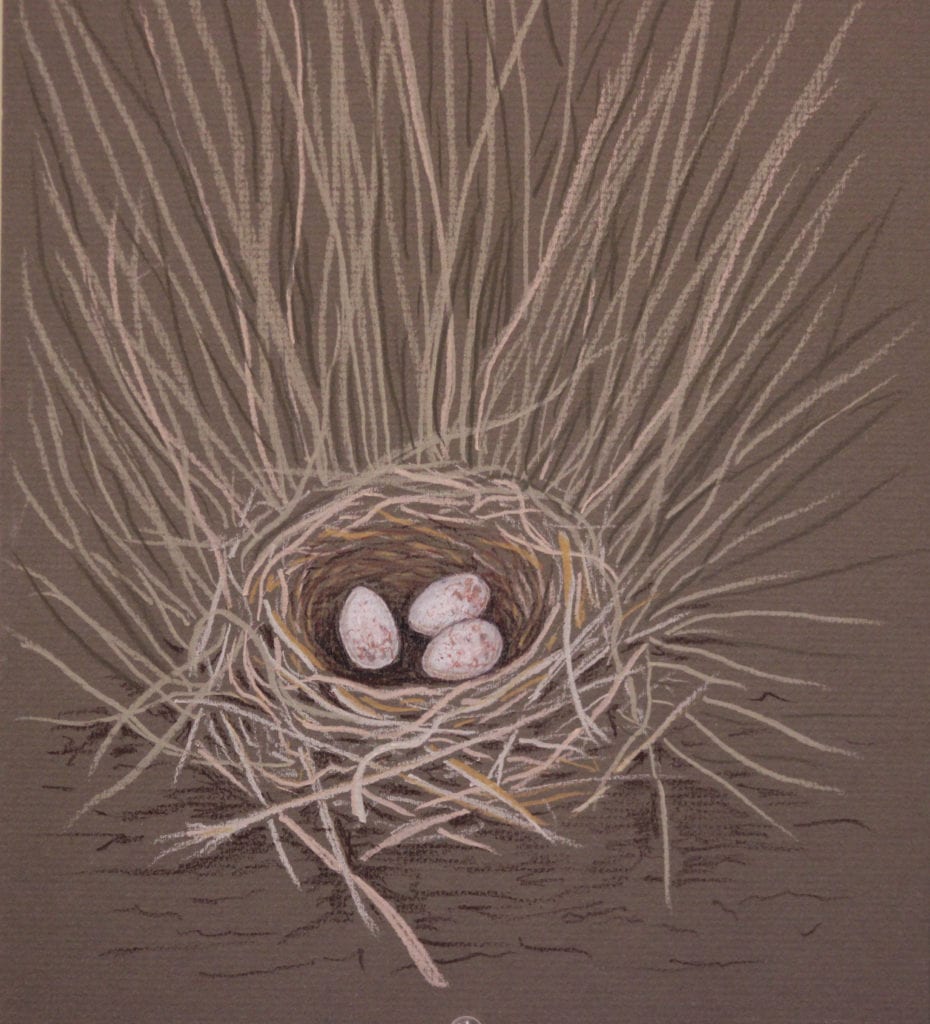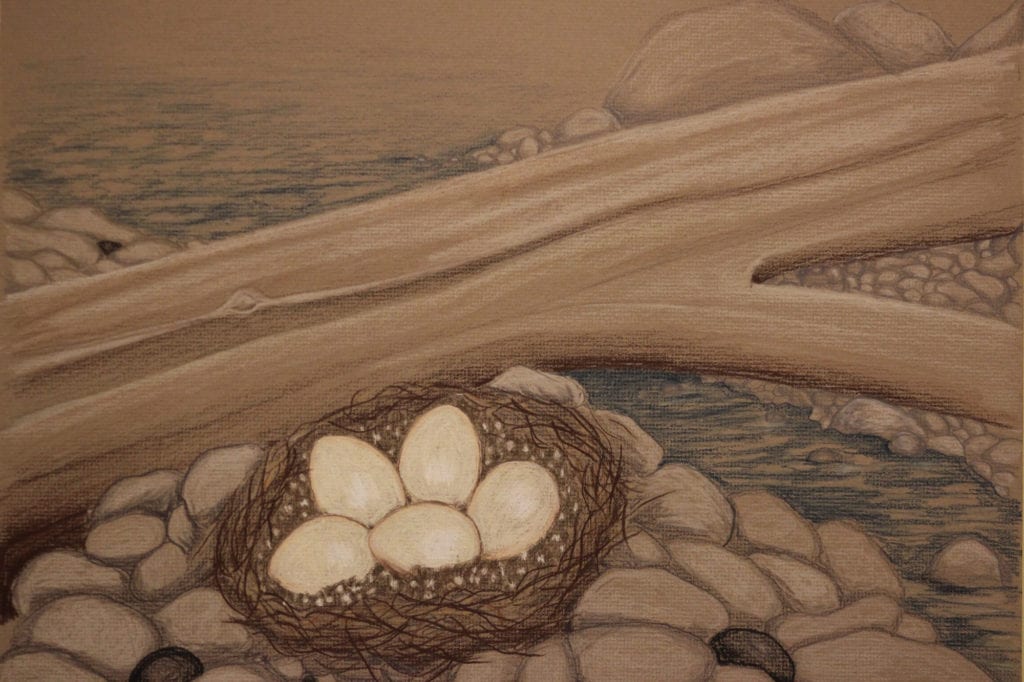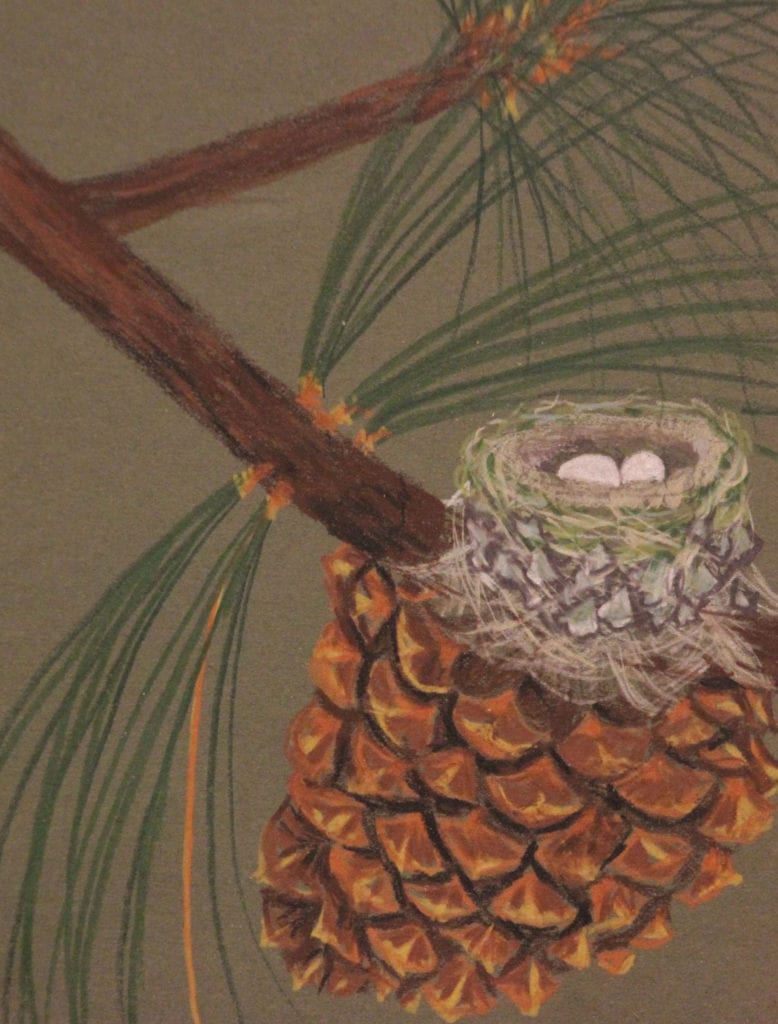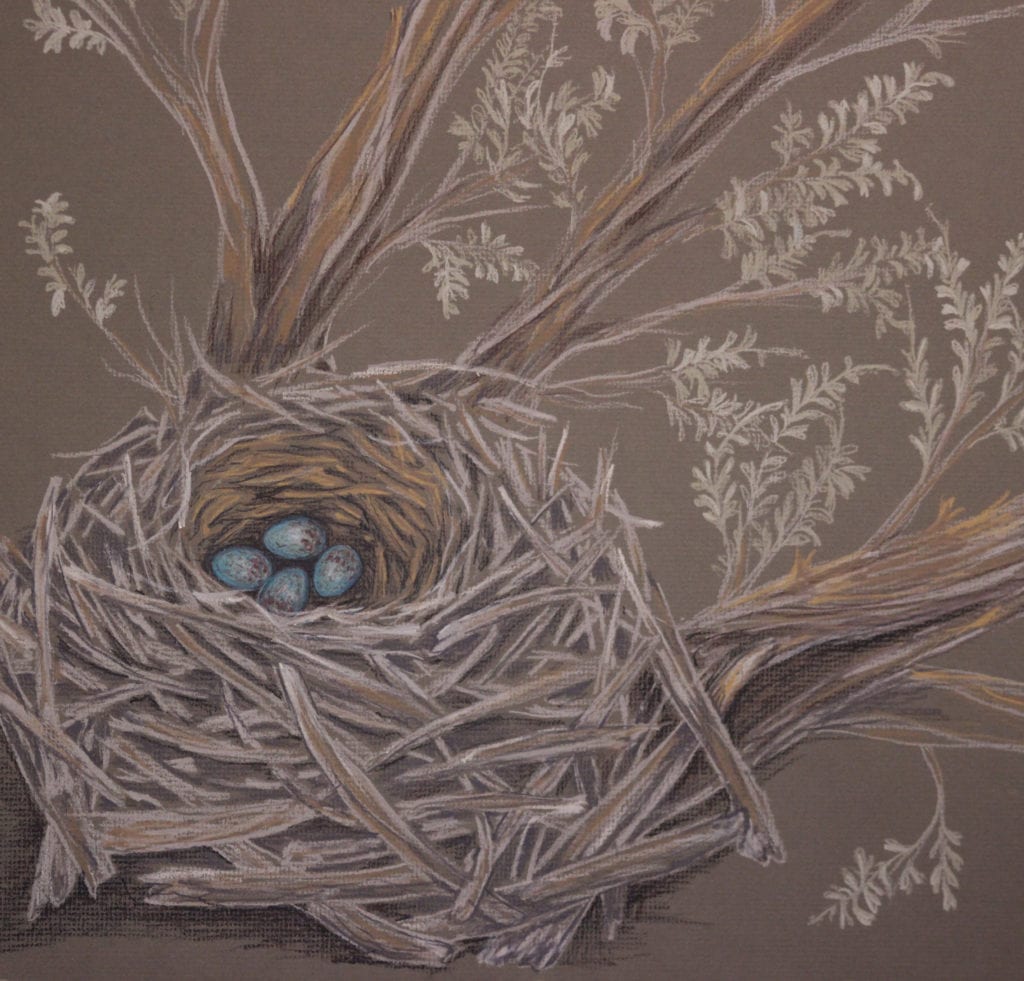One day in spring of 2014, I started drawing bird nests. I didn’t stop for almost a year. These drawings began as a way for me to explore my curiosity about birds’ nests without causing any harm to the birds themselves. My work on this series made me more aware of the impacts we have on wildlife, even when we are trying our best not to. I created these drawings using field guides, photographs and my imagination, not by observing birds’ nests in the wild. I hope to offer viewers the awe and wonder of viewing a nest and eggs up close, something which would normally be harmful to nesting birds as it can cause them to abandon their nest.
During this time when most of us are “nesting” in our homes, it is especially comforting to know that birds are continuing their own nesting rituals as spring unfolds in the high desert.
